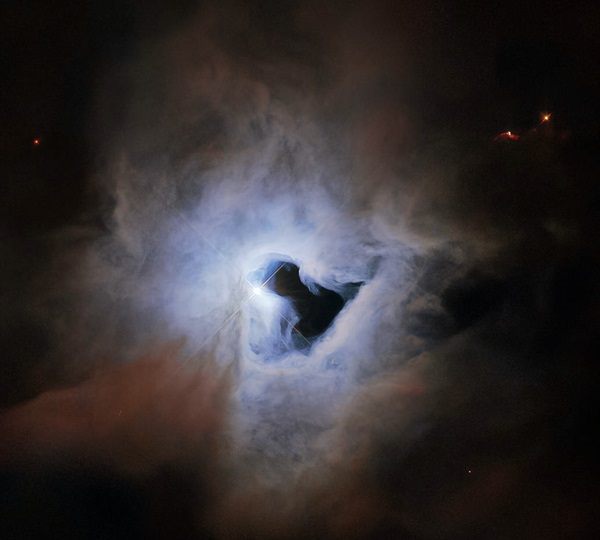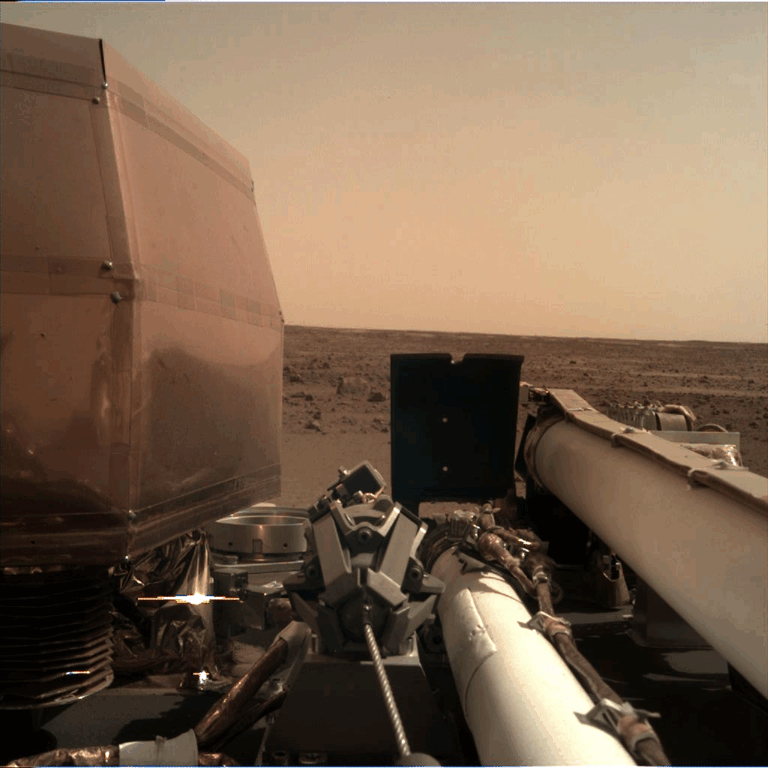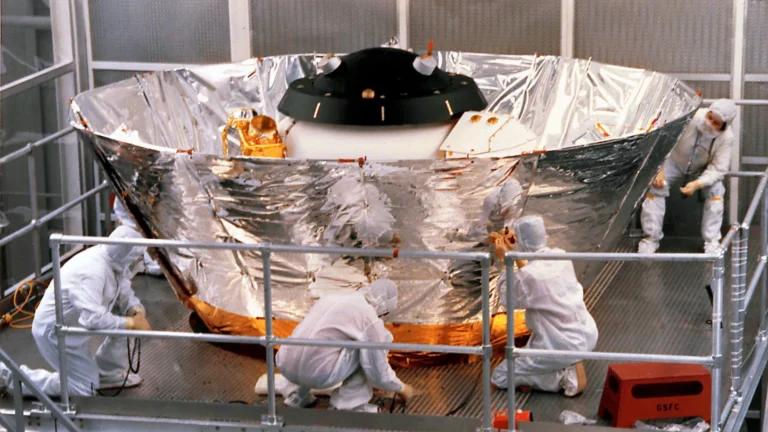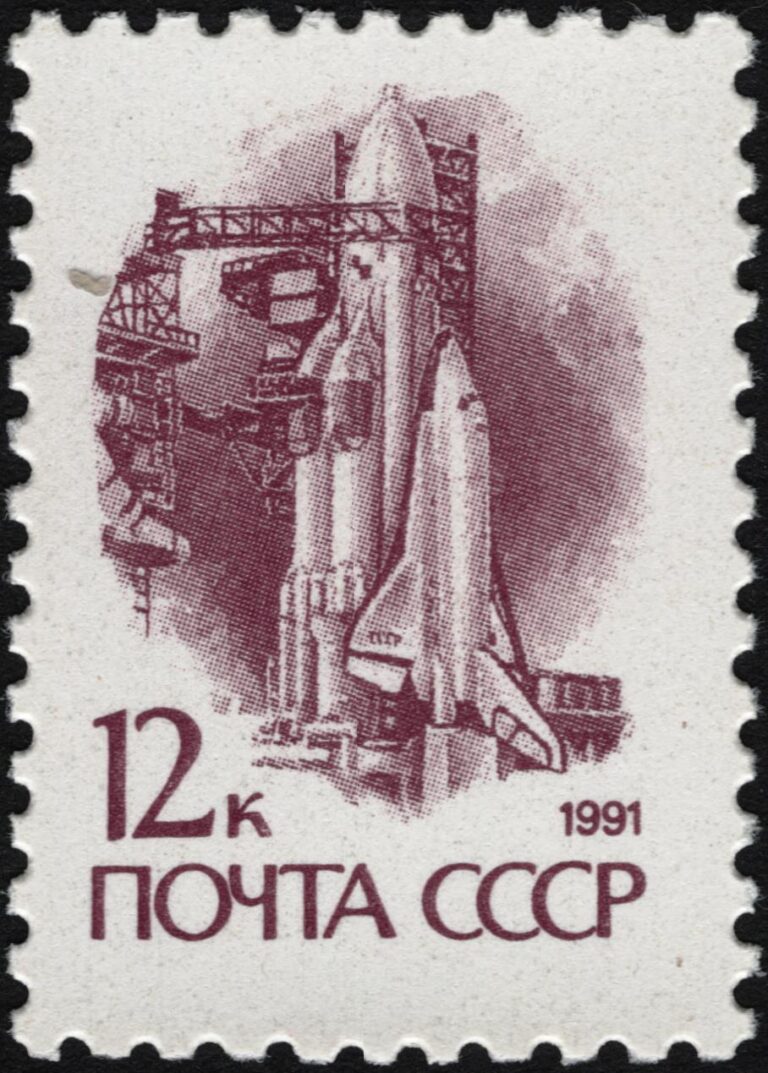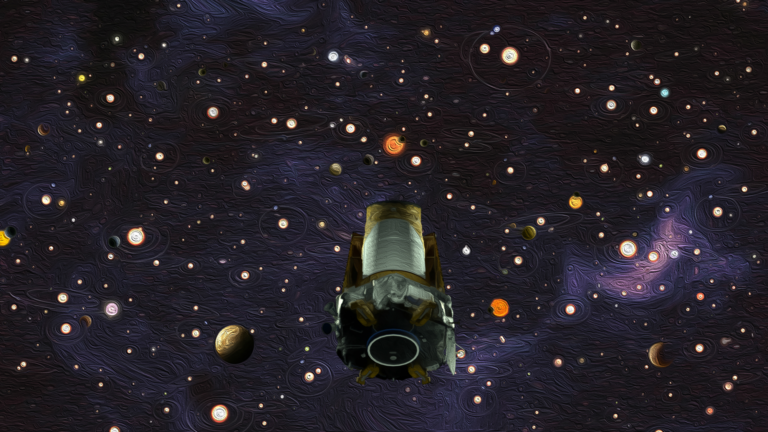Key Takeaways:
This alluring image, created from archival Hubble Space Telescope data, features the reflection nebula NGC 1999, which sports a mysterious hole in its center.
Located 1,350 light-years away in the constellation Orion the Hunter, the smoky blue clouds of NGC 1999 reflect light streaming from a newborn star embedded within, V380 Orionis (at center). The wispy puffs of illuminated gas and dust around V380 Orionis are leftovers from the celestial object’s birth, according to a NASA release.
Hubble’s Wide Field Planetary Camera 2 instrument captured the data for this image after Servicing Mission 3A in 1999. At that point, astronomers thought the inky keyhole- or pawn-shaped black patch was due to a particularly dense cloud of cold gas, called a Bok globule, which blots out background light.
However, thanks in part to ESA’s Herschel Space Observatory, astronomers now know the cosmic keyhole is just a relatively empty region of space — though they still don’t know what caused it.

